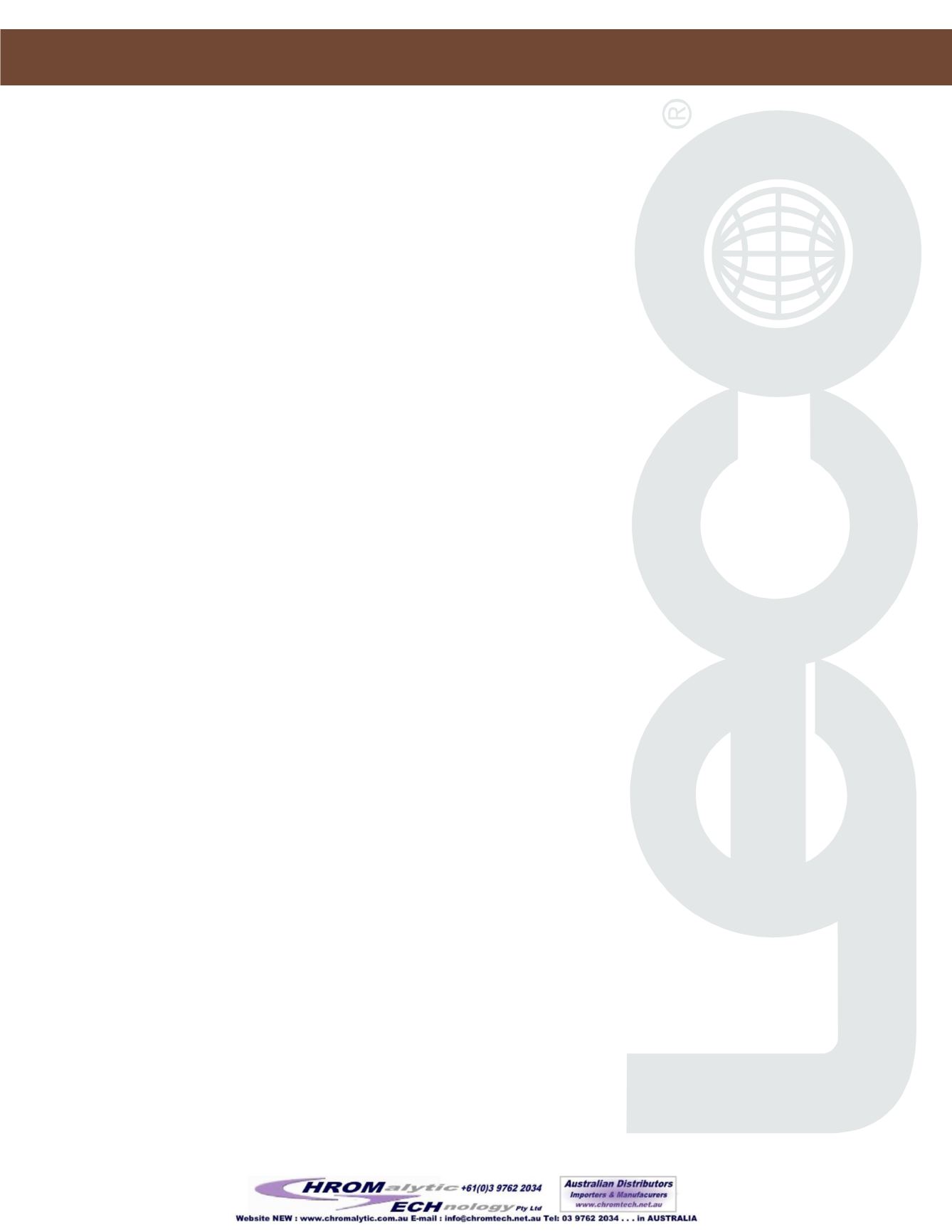
FormNo. 203-821-246 01/05-REV0
LECO is a registered trademark of LECO Corporation
1
Separation Science Application Note
GCxGC
Separationof PolychlorinatedBiphenyl
Congeners 105, 132, and153UsingGCxGC-ECD
with aSelectiveColumn in theSecondDimension
Introduction
Polychlorinated biphenyl congeners 105, 132, and 153 (with chlorine substitutions 234-34,
234-236, and 245-245, respectively) tend to coelute on 100%-dimethyl-polysiloxane and
95%-dimethyl-5%-diphenyl-polysiloxane gas chromatography (GC) columns. This can thwart
attempts to quantify them individually in samples, especiallywhen using the non-specific electron
capture detector (ECD).
Comprehensive two-dimensional GC (GCxGC) with a GC phase that is selective for PCBs is oneway
to solve the 105/132/153 (and other) coelution problems. GCxGC is away to increase peak
capacity by applying two independent separations to a sample in one analysis with one detector.
GCxGC involves serially connected columns (differing phases) separated by a thermal modulator.
A separation is performed on the first column, and then effluent from the first column is continually
(and quickly) focused and "injected" onto the second column. By keeping the second column short,
a series of high-speed chromatograms are generated, and the first column separation can be
maintained. Separation results can be plotted as a retention plane (column 1 time x
column 2 time), also known as a contour plot.
Standards
Aroclor 1254was obtained from AccuStandard (NewHaven, Connecticut, USA).
Experimental Conditions
LECOGCxGC-ECD
Agilent 6890 GC-ECD equippedwith a LECOQuad Jet—Dual-Stage Thermal Modulator
Column 1:
50m x 0.18mm x 0.18 µm Rtx-1 (Restek)
Column 2:
1.5m x 0.18mm x 0.10 µm Rtx-PCB (Restek)
Carrier:
Helium at 1.3mL/min, constant flow
Injection:
1 µL split at 250°C, split ratio 20:1
Oven 1 Program:
160°C (0.2min), 2°/min to 280°
Oven 2 Program:
20°C offset from oven 1
Modulation Time: 8 sec.
Detector:
ECD, 325°C, N2makeup gas at 148.7mL/min, 50 Hz
Results andDiscussion
Figure 1 shows the separation of PCBs 105, 132, and 153 in the second dimension by using
GCxGC-ECDwith the Rtx-PCB column. Note that these PCBs almost line up in the first dimension
(a coelution), which represents their retention times on Rtx-1, 100%-dimethyl-polysiloxane. The
Rtx-PCB column is particularly retentive for those PCBs that have lower degrees of ortho-chlorine
substitution.


